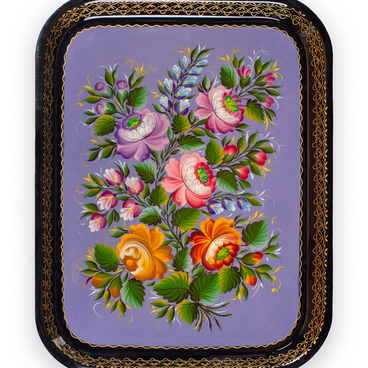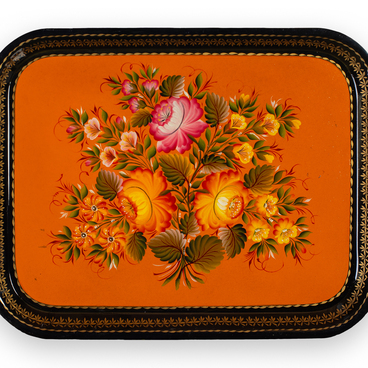This study from the museum collection is a simplified image of a rectangular tray. The composition features a bouquet of flowers, including poppies, pansies, bluebells, and forget-me-nots. Along the perimeter, there is a brushwork pattern. The study was created by the artist Iraida Ageyevna Arefyeva (1910–1996).
The artist began to study painting on metal in the early 1930s in the Metalist artel. Her teacher was the local master Kuzma Osipovich Burbashov. In 1953, she took advanced training courses in the village of Zhostovo. In 1957, Iraida Arefyeva joined the Emalposuda (Enamelware) factory in Nizhny Tagil. She worked there until the late 1960s. The study was included in the “Nizhny Tagil Tray” album compiled by the local historian Ivan Abramovich Orlov.
In the mid-20th century, the Ural art of painting on metal was on the verge of extinction. It seemed that amid all the construction and work of industrial giants, there was no room for trays decorated with flowers and decorative patterns. As a result, after two hundred years, the craft of tray painting could completely disappear in the region of its origin.
The researcher and ethnographer Sofiya Borisovna Rozhdestvenskaya, wrote in the Soviet Ethnography magazine in 1960,


